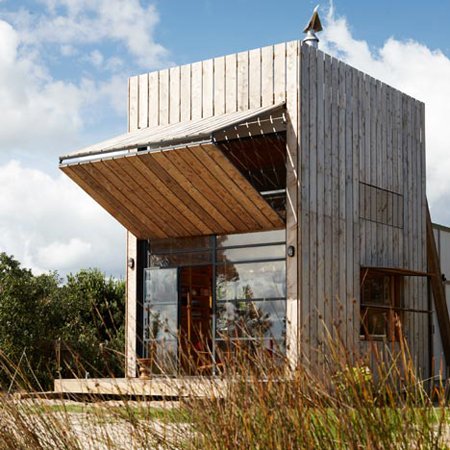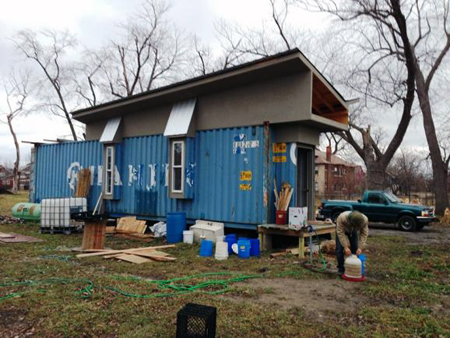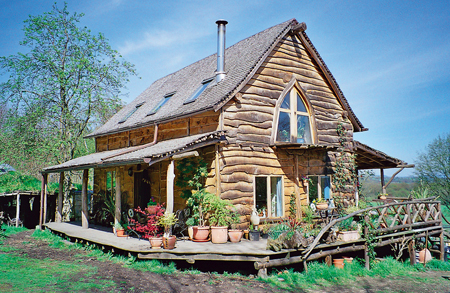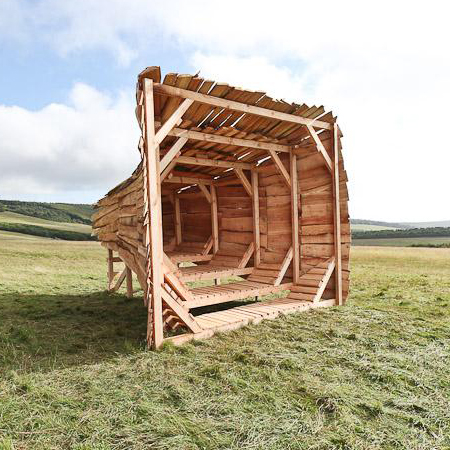In a hole in the ground there lived a hobbit. Not a nasty, dirty, wet hole, filled with the ends of worms and an oozy smell, nor yet a dry, bare, sandy hole with nothing in it to sit down on or to eat: it was a hobbit-hole, and that means comfort– Tolkien
Critic Ross Wolfe has eloquently written of the termination of grand architectural polemics, quoting Manfredo Tafuri who announced that ‘architecture as politics is by now such an exhausted myth that it is pointless to waste any more words on it’. Wolfe notes ‘despite Tafuri’s dismissive gesture, many today still insist that architecture possesses considerable political agency. Personally, I’m more inclined to agree with Tafuri’. One would be hard pressed to find any major enterprises in the UK to counter this solid claim. Instead we are apparently buried in the vast tomb of venture capitalism, the sombre left or right leaning monuments of the troubled European past having long since collapsed into Douglas Murphy’s ‘architecture of failure’. However, in spite of the death of the political avant-garde there has been a surge in what some may call an ‘anti-architecture’, a sleek movement borne of hand made micro-houses and Maker-machine fabricated interventions.
Mobile New Zealand beach hut on sleds © Crosson Clarke Carnachan architects
Micro-house pioneer Lloyd Kahn of Shelter publications observes that ‘as we witness the end of a pie-in-the-sky housing boom, and enter an era of increasing costs for that most basic of human needs, shelter; there’s a grass-roots movement to scale things back.’ Architects and designers have endeavoured to reclaim the interior realm albeit on a more human scale. This, it could be argued, is a politicised method of habitation, certainly in the context of Green and/ or Transition movements under the guise of participatory democracy (in spite of them often declaring themselves apolitical) and as such is part of a bold green attempt to reconcile with our urban condition instead of fleeing to a mythological Eden. Nick Stewart commenting on this escapism in the Dark Mountain blog acknowledges the dilemma and says ‘solutions, if they are to be effective, will have to be found under our noses, at our feet, in front of our eyes. A quote from Ivan Illich in Vernacular Values seems relevant here: “The under-classes are now made up of those who must consume the counter-productive packages and ministrations of their self-appointed tutors; the privileged are those who are free to refuse them”.’ The tiny house carpenter then in the eyes of Illich actively refuses to consume a big habitat.
Typical organic structure from Lloyd Kahn’s Tiny Homes book © Shelter Publications/ Respective owner
The failure of the unfettered neo-liberal adventure is brutally demonstrated in Julien Temple’s haunting documentary film Requiem for Detroit, in it we witness the slow collapse of luxurious hotels, palatial homes and vast department stores as Temple investigates the troubled city. Its producer George Hencken says ‘Detroit was a city at the vanguard of the future, the crucible for the cars and music which symbolised the American Dream the world over, and it’s post urban post-industrial chaos serves as a warning to the rest of the world. But despite its ruined landscape there is still hope, as those living within the city’s limits continue to fight for its survival, creating their own solutions such as urban farming and a strong network of young activists.’ In spite of the film’s extravagant ruin porn and heart-aching pathos, out of the crack addled corpse of the faded Motor City a new small scale ethos has apparently erupted, one of peer-to-peer politics, community activists and creative localism. People are building once again, sowing seeds, shaping form-work and nailing timber. This spirit of a resurgent optimism is perhaps best demonstrated by the work of the Heidelberg project, with their colourful efforts ‘changing lives through art’. The metropolitan pioneers are now reclaiming their surroundings often through anarchistic or cooperative methods, and embracing minuscule homesteads and compact allotments with glee.
Partially built Detroit Food Link farm unit photo © Mercedes Mejia via michiganradio.org
There are no more communist ghost utopias or fascist charnel house temples. The glum structures of the 1937 Paris World Expo in which the brutish pavilions of the Soviet and Nazi powers faced off against one another have long since faded from the collective memory of the land. Instead we witness in the svelte liminal architectural margins of the 21st century the birth or perhaps more accurately rebirth of Thoreau’s populist cabin simplicity. He wrote in the celebrated book Walden, ‘I went to the woods because I wished to live deliberately, to front only the essential facts of life, and see if I could not learn what it had to teach, and not, when I came to die, discover that I had not lived. I did not wish to live what was not life, living is so dear; nor did I wish to practise resignation, unless it was quite necessary. I wanted to live deep and suck out all the marrow of life, to live so sturdily and Spartan-like as to put to rout all that was not life, to cut a broad swath and shave close, to drive life into a corner, and reduce it to its lowest terms.’
A readily available stream of homespun simplicity can now be had from websites such as Cabin Porn and Tiny House Swoon, Thoreau is apparently alive and well living in the margins of our forests, mountains, alley-ways and car parks. Ben Law, builder of Kevin McCloud’s and the British TV viewing public’s favourite Grand Designs house (a beautifully hand crafted sweet chestnut cabin in the Sussex woods) writes in his charming book Woodsman that this simple living is part of being ‘married to the land’. For Law the relationship is a symbiotic one, a shelter is a deliberately organic enterprise and part of a cyclical union with the wider ecological landscape. Kevin McCloud himself has a programme where he builds a man-made structure entirely from local materials in an effort to reconnect with his physical surroundings, The ‘Man-Made House’ is described by him as (channelling an anti-Corbusier of sorts) ‘a happiness machine.’ The end result is a warm and comfortable timber vessel of whimsy.
Ben Law’s original straw bale house unit © Ben Law
A good starting point for diving into the world of the micro-house can be located within the wonderfully glossy coffee table books of Phyllis Richardson. Her XS series features a diverse selection of innovative, raw, witty and often ultra low cost interventions from architects, designers and artists. She says on her blog when commenting on Brad Leithauser’s essay In Praise of Concision, that these diminutive habitats work because of their innate honesty, ‘for a simple premise can be profound, as in a house for meditation’.
Award winning design studios such as Studio Weave and Invisible Studio (headed by Piers Taylor) with their own celebrated micro architectural projects take this miniature low-fi movement one step further by running the innovative Studio in the Woods programme. This takes enthusiastic students and thrusts them into a gritty and tactile woodland workshop where they can fabricate all manner of experimental forms. James Payne in BDonline declares that ‘… far from being just a bunch of hippies waving chainsaws in the woods, the event proved to be a concentrated learning experience in debating and evolving ideas and of collectively hammering together the results. It was impressive to see how much can be achieved in little more than two days by teams of a dozen people with no bureaucracy or paperwork involved.’ Over the years participants have built delicate tree-houses, lofty sky-boxes, cosy shelters, elevated viewing platforms and all manner of sculptural ‘almost buildings’, all challenging what it is to define the boundaries of architecture and craft.
A typical Studio in the Woods structure image © Piers Taylor
I’m reminded when considering these interventions of the re-imagined San Francisco Bay Area bridge described by writer William Gibson in his sci-fi novel Virtual Light. The bridge itself was re-purposed into a near-future assemblage, the shattered remains of the structure whose back had been snapped by an earth quake was now intertwined with all manner of chaotic urban life. A visiting anthropologist documenting the new inhabitants of the perilously squatted sprawl noted that ‘…the integrity of its span was rigorous as the modern program itself, yet around this had grown another reality, intent upon its own agenda. This had occurred piecemeal, to no set plan, employing every imaginable technique and material. The result was something amorphous, startlingly organic.’
Typical Rural Studio $10K house project image © Deep Fried Kudzu
The post-American dream is signalled by the arrival of emergent interstitial architectural systems and one innovative practice has been at the forefront of this drive. Rural Studio founded by the late Sam Mockbee at Auburn university is both a student and community based programme that has produced an astonishingly rich body of low-cost small scale work. Over the years the ‘citizen architects’ have built a myriad of car-windscreen churches, $10k pre-fab homes, floor-tile houses, timber off-cut bridges, cardboard community pods, metal-sheeting shelters and pallet porches amongst others. Sam Mockbee stated ‘architecture more than any other art form is a social art and must rest on the social and cultural base of its time and place.’ By its very nature it is inherently political within the context of community needs and for this reason alone the micro-house and tiny building neatly contradicts with Tafuri’s declaration at the beginning of this blog post. I’ll end with Mockbee, ‘it’s not about your greatness as an architect, but your compassion’. Hopefully these empathic creations will save us all from the tyrannical environmentally destructive and selfish banality of the urban business modern, erupting like flowering weeds in the liminal places of the city.








I like all this, but…
I think you could argue The Shard (or simllar vanity projects) to be every bit as politicial as any number of post-war social housing projects, it’s just that the politics are neo-liberal rather than left-wing.
It sometimes strikes me that there’s something curiously misanthropic and individualist about the retreat to a cabin in the woods. It’s also very dependent on nobody else wanting to (or being able to) do it. These are certainly nice but don’t really allow for high density populations (I think).
Still nice though…
Good point, I guess I was arguing that this then is an architecture of the politically personal. I think projects like the Shard are anti politics in the way that neo-liberalism is a rejection of people. It’s not all about running away though (hence the point about the Dark Mountain comment) that’s why I find Detroit so interesting, you can have your cabin in the city and positively share this space with other considerate folks?
I do remember a sort of movement in the late 60s early 70s where some enterprising drop-outs built their own places out of scavenged materials from rubbish tips etc. I could never work out where they got the land from. I admit to have kept a secret hankering for such a place/ enterprise. Most had huge bedroom windows opening out to the east to catch sunrise etc.
Going off seasonal and diurnal patterns the dwellings would have evolved very distinct directional layouts. I suspect the evolving sprawl of say Gibson’s survivors would either mimic what was there before (psychologically for a sense of the known, ‘safety’) and concentric though not circular layouts.
Another stimulating and great blog!
Thanks, land certainly in England is the great leveller in this debate, ignorant planning and property developments have essentially crucified any hope of interesting low cost sustainable interventions for normal people.
Another wide ranging post Matt that offers much to ponder and think about. Like the idea of the ‘almost buildings’.
Thanks very kind, I too like ‘almost buildings’, a hint of what may yet be!
I’ve been extremely pleased to see the “new” small house movement get rolling. As a young man coming of age in the oil “crisis” of the mid 1970’s I thought I was going to build solar powered geodesic domes. I was under the influence of books like “Shelter” (my old copy is still with me) and the public lectures of an elderly but dynamic Buckminster Fuller. Obviously, I took a different path in life, but even now I get a little bit wistful when I see yurt.
I think small dwellings have big potential – but I’m not sure about how the local building codes will accept them. It may well be they’re off to more relaxed legal regions for now. Apart from there’s a whole group of folks aged 18-25 who I’d bet would be quite content with such housing. Many in this group are so battered by the current economy I suspect they might grow with the same sense of Depression era frugality that my parents displayed.
I should add that my current dwelling is about as the same size as my first apartment. I really don’t need all that much and at age 54 those material needs are getting less and less.
Thanks Dave, you make a very important point about material needs, I think this micro architecture is a viable solution to both housing needs and a reintegration of community values and a rejection of suburban isolation, but I fear in the UK at least it’s a lost cause. The weird irony here is that new property developments by the big house builders have by historic terms tiny rooms, but are typically so poorly designed (if at all) that the spaces are nigh on useless. Is your current dwelling online to see?
A fascinating post, Matt. The Illich quote certainly has resonance today.
Thanks very kind. I’m a new comer to Illich so have lots of read.
I was just looking at my reprint circa 1990 copy of Shelter! I always loved the DIY approach, in spite of having an architect partner. I did a textile project years ago on the theme of shelter too which involved making a decorated canvas tepee. Illich takes me back too – Deschooling Society was popular when I was at Goldsmiths College. I always enjoy your architectural posts Matt and this one is certainly appealing!
Thanks Diana, is your teepee online? I wonder too, have you both ever collaborated on any projects as you have a wonderful insight on the city.
Excellent and thoughtful post. My thoughts echo Dov and the problems of micro-houses somehow balancing the needs of land, high-density population and traditional British property owning aspirations.
We could probably learn a lot from the Dutch who seem to be experts in utilising space and designing small but well-designed eco-housing estates. Someone with greater knowledge and memory might know what I am referring to because I can only remember seeing something about it on the telly once!
Thanks Alex, you make a good point, we live in a land at war with conflicting needs and traditions, there’s lots of great estates on mainland Europe which embrace these values, but there are also a few small projects here in the UK, not just in off-grid Welsh villages like Lamas http://lammas.org.uk which are springing up, for example on Skye with the wonderful Rural Design Studio. http://www.ruraldesign.co.uk/ however I hazard it would take an enormous change to make this outward looking value mainstream.
Interesting – but can you explain what ‘Maker-machine fabricated interventions’ are, SVP?
I have turned the phrase over & over, but just can’t get a cognitive grip on it…
Ah sorry probably poorly phrased, merely the interesting growth in machine fabricated small structures, architects are starting to explore the possibility of using machine fabricated production techniques such as CNC (see the Maker movement in the USA) to produce one off yet mass produced items.